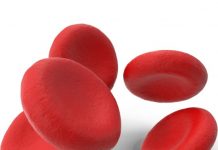Gangrene is generally the result of a critical shortage of blood supplied to the extremities, and mainly occurs in the fingers and toes although internal organs and muscles can be affected.
Anything that blocks the blood flow like an injury, an underlying medical condition or a combination of both, can lead to gangrene. With insufficient blood to nourish the cells, they die and the body tissues start to decay and die.
The most common types of gangrene have different causes. Dry gangrene is caused by a shortage of blood to the area and wet gangrene is caused by a bacterial infection.
Conditions that lead to gangrene may be diabetes, blood vessel disease or arteriosclerosis, injury, deep vein thrombosis, severe burns, frostbite, smoking and excessive alcohol consumption. These underlying conditions can damage the blood vessels and disrupt the flow of life-preserving blood.
Like so many diseases, early detection of gangrene is vital to the successful treatment of the condition and subsequent recovery of the patient.
People with the pre-disposing conditions should be vigilant in examining their feet and hands for any early signs of problems. The prognosis these days is good for recovery, if gangrene is treated promptly after early diagnosis.
When gangrene affects your skin, early signs will be discoloration of the skin, usually blue, brown or black, severe pain in the area which then becomes numb and later there will be a bad-smelling discharge.
You may have a fever and feel generally unwell. If the gangrene was caused by bacteria, it could spread to other parts of the body, so prompt action is vital.
Tissue that is damaged by gangrene cannot be restored and has to be removed, but treatment can prevent the gangrene from spreading further into the body.
Few complications will occur with dry gangrene because it progresses slowly and has no bacterial infection. Those with underlying conditions, those who delay getting treatment and the elderly are the ones most likely to suffer complications.
As a diabetic, you know that you are at risk of developing gangrene, so help yourself by following these guidelines to reduce your risk:
- Don’t smoke – Tobacco damages the blood vessels, and is a second underlying condition that leads to gangrene. Limit your risk potential by quitting. This is never easy, but there is lots of help these days with pills, patches, hypnotherapy and support groups.
- Take care of your diabetes, keep to your diet and make a daily habit of examining your hands and feet, checking for cuts, signs of redness or swelling. See your doctor immediately if you find anything abnormal.
- Practise good personal hygiene – Wash your hands with mild soap and dry them thoroughly, particularly if you have been in the garden. Keep your hands clean, dry and moisturized to prevent cracking of the skin and infection.
- If you live in a cold climate, be careful in winter. Cold temperatures cause a reduced blood flow. Protect your hands and feet from intense cold to avoid frostbite.













